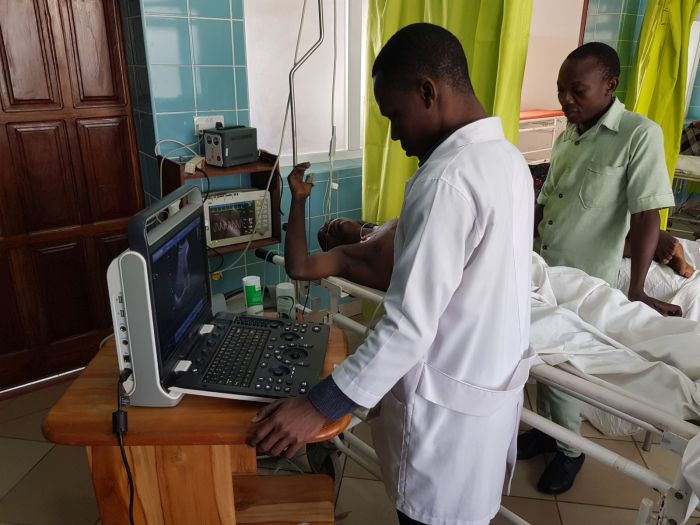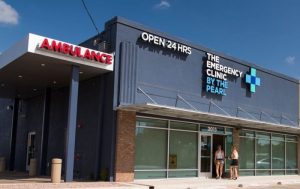
With Emergency Care in Rural Areas at the forefront, this paragraph opens a window to an amazing start and intrigue, inviting readers to embark on a storytelling filled with unexpected twists and insights. Rural areas present unique challenges in providing emergency medical services, but innovative solutions are paving the way for better access and care. Let’s dive into the world of emergency care in rural communities.
In this article, we will explore the barriers to emergency care, the role of telemedicine and technology, the importance of community involvement, and how all these factors intersect to ensure timely and effective emergency care in rural areas.
Overview of Emergency Care in Rural Areas

Emergency care in rural areas encompasses the provision of immediate medical assistance to individuals facing urgent health crises in less densely populated regions. This type of care is crucial in ensuring that individuals in rural communities receive prompt and effective treatment when faced with emergencies.
Unique Challenges in Providing Emergency Medical Services in Rural Settings
- Rural areas often have limited access to healthcare facilities, leading to longer travel times for patients in need of emergency care.
- Shortages of healthcare professionals in rural areas can hinder the availability of timely emergency medical services.
- Inadequate infrastructure, such as poor road conditions or lack of emergency medical resources, can further complicate the delivery of emergency care in rural settings.
- Communications challenges, including limited access to telemedicine or emergency dispatch services, can delay the arrival of medical assistance in rural areas.
Importance of Timely Access to Emergency Care in Rural Communities
Timely access to emergency care in rural communities is essential for saving lives and minimizing the impact of medical emergencies. Quick response times and efficient treatment can prevent serious complications, reduce mortality rates, and improve overall health outcomes in rural populations.
Barriers to Emergency Care in Rural Areas
Access to emergency care in rural regions is often limited by various barriers that impact the delivery of medical services. Geographical factors, such as distance from healthcare facilities, lack of transportation infrastructure, and challenging terrain, play a significant role in hindering timely access to emergency care. In addition, the shortage of healthcare professionals in rural areas further exacerbates the challenges of providing adequate emergency medical services.
Geographical Factors
Geographical factors in rural areas, such as long distances to medical facilities, limited access to transportation, and remote locations, pose significant challenges in delivering emergency care. Patients may face delays in receiving timely medical attention due to these barriers, leading to potentially adverse outcomes. In emergencies, every minute counts, and the geographical isolation of rural areas can impede the quick response of medical teams.
Shortage of Healthcare Professionals
The shortage of healthcare professionals, including doctors, nurses, and emergency medical technicians, in rural areas is a major barrier to providing adequate emergency care. With limited healthcare workforce in rural regions, there may not be enough trained personnel to respond to emergencies promptly. This shortage can result in longer wait times for patients, decreased quality of care, and increased strain on the existing healthcare providers who are already overburdened.
Telemedicine and Technology in Rural Emergency Care
Telemedicine has been a game-changer in the delivery of emergency care services in rural communities. It leverages technology to connect patients in remote areas with healthcare providers, offering timely and efficient care when traditional in-person access is limited.
Role of Technology in Bridging the Gap
Technology plays a crucial role in bridging the gap between rural areas and specialized emergency care centers. Through telemedicine, healthcare providers can remotely assess patients, provide consultations, and even monitor vital signs in real-time. This not only expedites the delivery of care but also ensures that patients receive the appropriate treatment without the need to travel long distances.
Innovative Technological Solutions
In rural emergency care settings, various innovative technological solutions are being utilized to enhance patient outcomes. For example, mobile health applications allow patients to communicate with healthcare providers, access medical information, and schedule appointments conveniently. Additionally, wearable devices that track vital signs remotely enable continuous monitoring of patients with chronic conditions, ensuring early intervention in case of emergencies.
Community Involvement and Preparedness

Community involvement plays a crucial role in supporting emergency care services in rural areas. When local residents are actively engaged and prepared, they can significantly contribute to improving emergency response and first aid in these remote settings. This collaboration between the community and healthcare providers is essential for ensuring timely and effective emergency care in rural areas.
Role of Community Training Programs
Community training programs are instrumental in enhancing emergency preparedness in rural settings. These programs educate residents on basic first aid techniques, CPR, and how to respond to emergencies until professional help arrives. By empowering community members with the knowledge and skills to assist during emergencies, these training programs can make a significant difference in saving lives in rural areas.
- Training programs can help bridge the gap between the time an emergency occurs and when professional help reaches the scene, potentially increasing the chances of survival for the patient.
- Communities with well-trained members are better equipped to handle emergencies such as accidents, sudden illnesses, or natural disasters that may occur in remote areas with limited access to healthcare facilities.
- By fostering a culture of preparedness and collaboration, community training programs can strengthen the overall emergency response system in rural communities.
Success Stories of Community Collaboration
There have been numerous success stories of communities coming together to enhance emergency preparedness in rural areas. For example, in a small town in the Midwest, residents organized regular first aid workshops and CPR training sessions for community members. As a result, when a severe storm caused widespread power outages, these trained individuals were able to provide immediate assistance to those in need until emergency services could arrive.
Community involvement is not just about responding to emergencies but also about proactively working together to prevent them through education, training, and preparedness initiatives.
As we wrap up our discussion on Emergency Care in Rural Areas, it’s clear that addressing the challenges and leveraging technological advancements are crucial in ensuring access to timely emergency care. By fostering community involvement and preparedness, rural areas can overcome barriers and enhance emergency response efforts. Together, we can strive towards a future where every individual, regardless of location, has access to quality emergency care services.
Popular Questions
What are some common barriers to emergency care in rural areas?
Common barriers include geographical factors, shortage of healthcare professionals, and limited access to specialized emergency care centers.
How is telemedicine revolutionizing emergency care delivery in rural communities?
Telemedicine allows for remote diagnosis, treatment, and monitoring of patients, overcoming the distance barriers often faced in rural areas.
Why is community involvement important in supporting emergency care services in rural areas?
Community involvement ensures quicker response times, increased access to first aid, and overall better preparedness in emergency situations.





